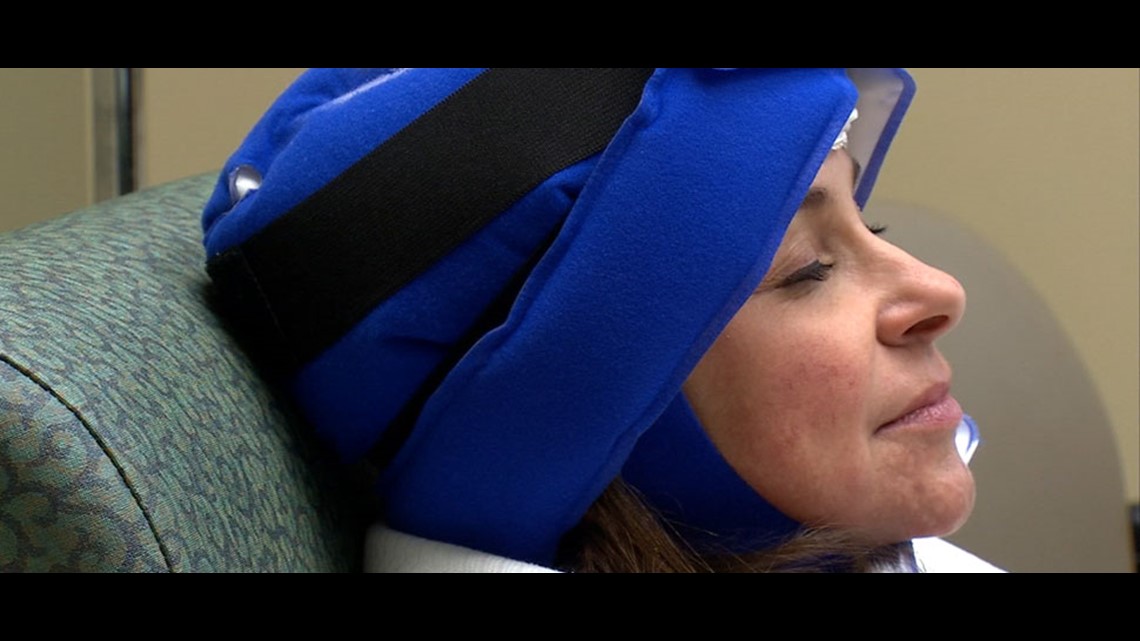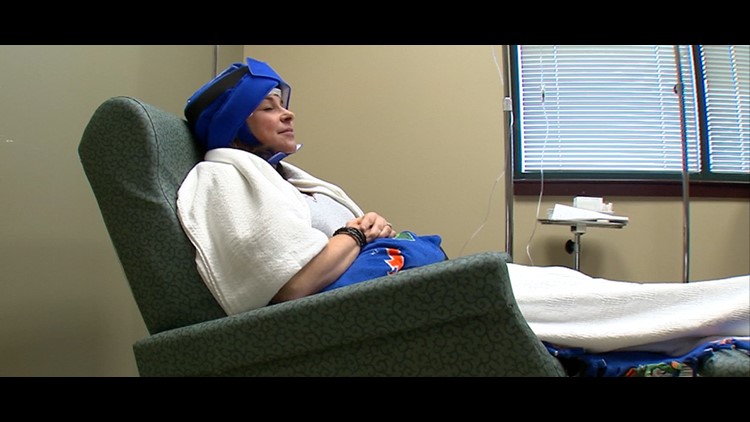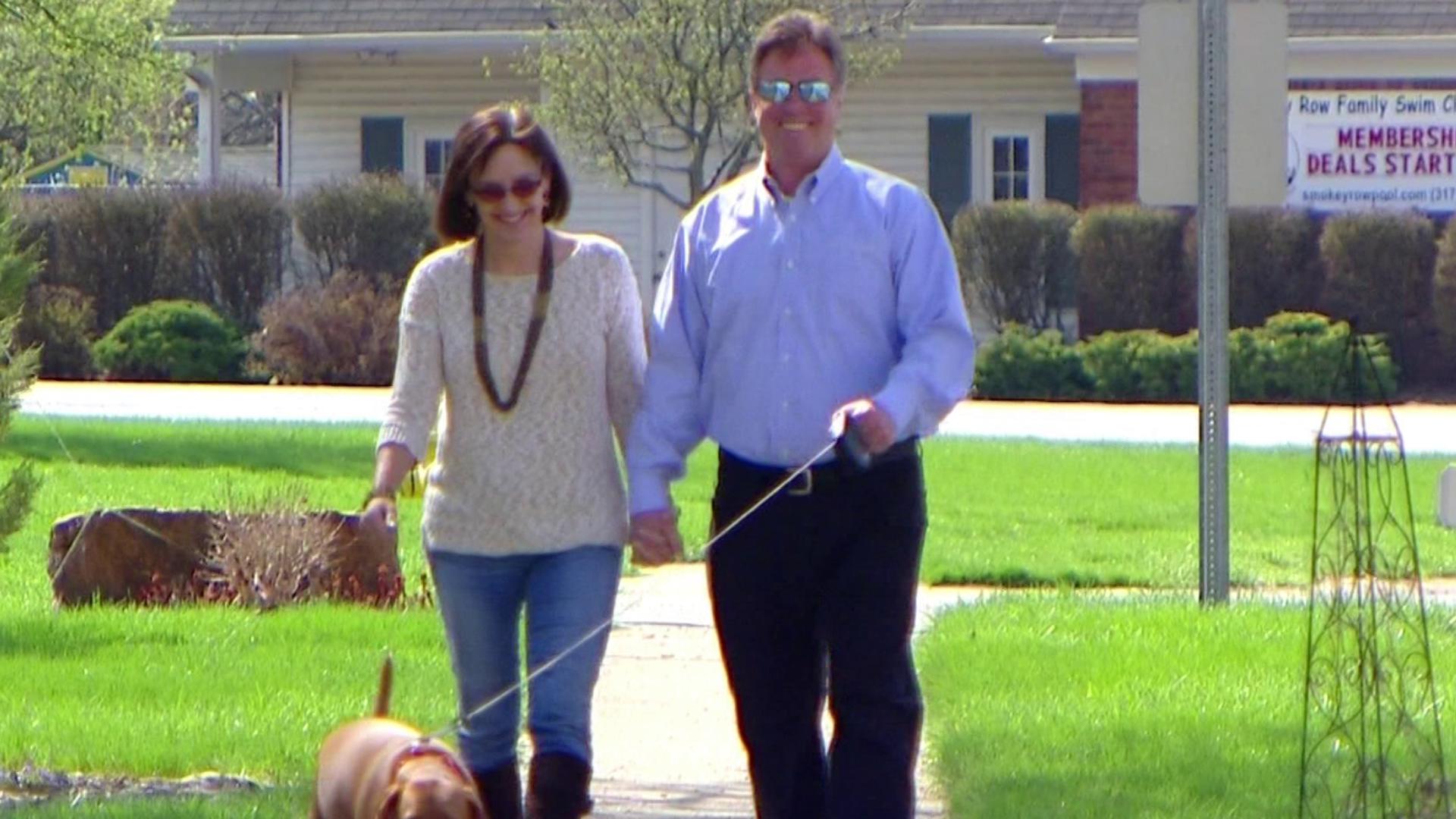INDIANAPOLIS (WTHR) - A look in the mirror can be one of the most difficult moments for some cancer patients.
The way chemotherapy ravages the body is sometimes the most obvious sign someone has cancer. Now, an unusual-looking therapy is giving cancer patients a big chill, helping save their hair while the medication tries to save their life.
"I didn't want people to know that I was sick," said Carla Leppert.
Leppert has undergone chemotherapy every third week for four months and still has her hair.
"At the end of all my treatments, I mashed up my hair into one ball that was the size of a tennis ball, maybe, so that is all the hair I lost," Leppert said.
Carla is a wife, mom, and grandmother, keeping her hair as she fought HER2 triple-positive breast cancer, she says, was easier for everyone.
"They were all affected emotionally and my friends...and it was nice when you could see their faces and say...they'd say, 'Oh, you look wonderful!' That made it worthwhile. It was easier on everybody, including me," she said.
There were several companies marketing scalp hypothermia or cryotherapy. The patient wets their hair and freezes the scalp so, during chemotherapy, the drugs are less likely to impact hair follicles.
"It's a very simple idea and it works," Carla said.


The process is a bit cumbersome. What you do is, keep the cap super cold and wearing it before, during and after treatment at minus-40 degrees Celsius. To do that, you use dry ice and put it on over your head on top of a shower cap. It looks a little bit like a costume when going through treatment, but the whole goal is what you have after.
"I would do it again," Leppert said.
Dr. Niraji Gupta is an oncologist at St. Vincent, who has had 24 patients use the cold cap so far and sees additional benefits.
"In terms of the side effects and the way they handled treatments, a big different is it almost makes you wonder, you know, if one is in a good frame of mind that how some of those side effects, be it nausea, fatigue and what not were much lesser," Gupta said.
In addition, Gupta believes the therapy could encourage patients who now decline life-saving treatment.
"Eight to 10 percent of ladies may refuse. I have ladies who I have taken care of who have refused absolutely the treatment, that if it causes hair loss, we won't do it," Gupta said.
"I felt very good about myself, I felt very good about getting through treatment and doing it successfully," Leppert said.



